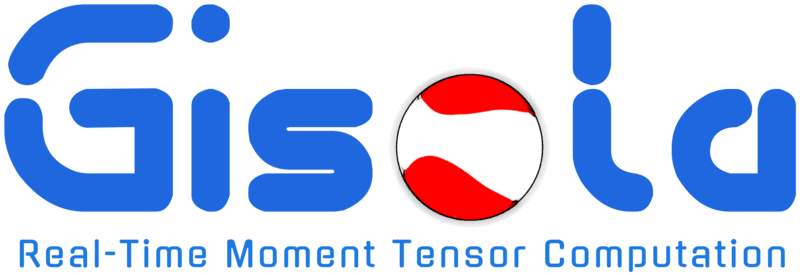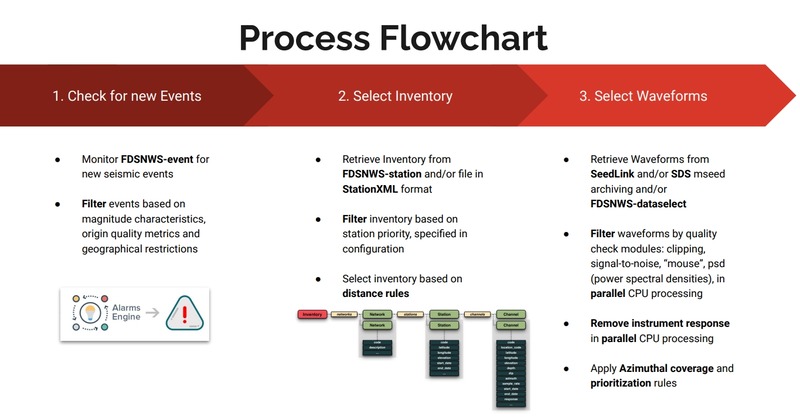Introduction
This case study is based on desk research - including the Gisola GitHub page and the publication in the scientific journal Seismological Research Letters – as well as an interview conducted by the OSOR team with Nikolaos Triantafyllis - PhD candidate in High-Performance Computing (HPC), software developer and IT at the Institute of Geodynamics of the National Observatory of Athens (NOA) – and Efthimios Sokos, Professor of Seismology at the University of Patras.

Earthquakes continue to pose a significant threat to several EU countries, particularly in the Mediterranean region. Their unpredictable nature demands effective mitigation and response measures to attenuate repercussions on infrastructure, economies, and human lives. Digital tools and solutions, including open source software, are playing an increasingly important role in earthquake and, more generally, natural disaster management. The United Nations recognises the significance of digital innovation within the Sendai Framework for Disaster Risk Reduction 2015-2030. At the EU level, the Digital Europe Programme and Horizon Europe encourage the development of digital solutions for disaster preparedness and response.
Greece has prioritised the integration of digital solutions for public service modernisation in the Ministry of Digital Governance’s Bible of Digital Transformation 2020-2025. As one of the most seismically active countries in Europe, Greece also has a long-standing commitment to seismic risk management and civil protection.
At the intersection of these priorities stands Gisola, an open source solution that facilitates the visualisation, analysis, and interpretation of seismic events. Developed by the Institute of Geodynamics of the National Observatory of Athens (NOA), the Seismological Laboratory of the University of Patras (UPSL), and the Department of Informatics of the University of Piraeus, Gisola supports both researchers and emergency response teams in making informed decisions following an earthquake.
Gisola
For real-time civil protection applications, the rapid identification of the characteristics of an earthquake after it occurs is crucial. This is accomplished by the automatic moment tensor (MT) determination procedure. While MT solutions are commonly used in global seismic networks and for large earthquakes, applications to regional and moderate-size events lag behind.
Gisola emerges as an innovation in this field. The solution consists of an open source MT determination software tuned for regional seismic networks and oriented toward high-performance computing. It employs enhanced algorithms for waveform data selection and assessment, enabling automated MT inversion and reading of seismic events. At its core, Gisola is a scientific software capable of providing critical information to civil protection agencies for the mitigation of seismic risk through real-time determination of seismic source properties such as type and size.
Released in 2021, today the solution is not only the basic tool for MT inversion calculation in Greece, but its use cases extend internationally, including successful implementations in Colombia, Indonesia, Albania, and Puerto Rico. Gisola’s real-time application by the National Observatory of Athens can be viewed here.
Main features of Gisola
Gisola is an open source solution licensed under the GNU General Public License version 3 (GPLv3). The software performs four key tasks:
-
data retrieval and processing,
-
seismic wave modelling (Green's function computation[1]),
-
inversion calculations,
-
visualisation, distribution, and archiving of results.
Python is employed for the first and the fourth tasks, while Fortran is used for the other two. Gisola includes over 3,500 lines of Python code, leveraging libraries such as ObsPy - an open source Python framework for processing seismological data – the NumPy package for scientific computing and data manipulation, and the Matplotlib library for data visualisation. Standard Python modules like subprocess, multiprocessing, and logging ensure interface and parallel computing with Fortran code. Finally, web languages such as HTML5 and JavaScript are used for Gisola’s web suite and Jinja2 supports web-based rendering of MT results.

Figure 1: Gisola’s Process Flowchart (1). Source: GitHub

Figure 2: Gisola’s Process Flowchart (2). Source: GitHub.
A key strength of Gisola is its parallel processing capability through OpenACC and OpenMP, making it compatible with systems with or without Graphics Processing Unit (GPU) devices. OpenACC is particularly optimised for GPU-based parallel computing, allowing Gisola to leverage high-performance computing resources, while OpenMP serves as a Central Processing Unit (CPU)-based fallback, ensuring adaptability across different hardware configurations. For further flexibility, the solution utilises Docker containers for deployments across various computing environments, ranging from personal computers to high-performance servers, provided they run the Linux operating system.
Gisola has a repository on GitHub with detailed documentation of its technical architecture.
Technical innovations behind Gisola
As mentioned above, one of Gisola's key strengths lies in its advanced parallel computing framework, leveraging GPU-based multiprocessing for rapid seismic data processing while ensuring continuous performance with CPU fallback when necessary. This parallel approach significantly accelerates seismic data analysis, enabling faster insights without compromising computational efficiency.
Through the 4-D spatiotemporal grid search method, Gisola examines data across both space and time, improving the precision of seismic source analysis. Moreover, the solution employs a dynamic process for the selection of seismic monitoring stations, assessing the quality of their seismic data through metrics such as signal-to-noise ratio, waveform clipping, and power spectral densities. This selection ensures that only the highest quality data is used, minimising noise and improving the accuracy of the analysis. Since seismic data are never free of noise or other types of disturbances, their identification and removal are critical for the success of the software.
Finally, differently from other non-commercial solutions, Gisola is connected to SeisComP, the state-of-the-practice software that scientific institutions typically use to acquire seismological data, and it follows standard protocols in seismology for data exchange, making it relatively easy to extract data from the International Federation of Digital Seismograph Networks (FDSN) Web Services, SeedLink real-time data servers, and SeisComP-compatible databases.

Figure 3: Gisola’s 4-D Spatiotemporal Moment Tensor Grid Search in Parallel. Source: GitHub.
The development, governance, and financing of Gisola
The development of Gisola was driven by the need to automatically compute the moment tensor solution of moderate to large earthquakes in Greece. The development team wanted to create a software tailored to the specific needs of the National Observatory of Athens but open for reuse by all interested researchers and scientific institutions.
Gisola was built as an automation of the ISOLated Asperities (Isola) code, a manually computed moment tensor retrieval utility that had been in continuous development and use in the Observatory since 2003. As the computations and analyses at the core of Gisola had been carried out manually for over a decade, making the transition to automation was a natural progression. The development of Gisola took approximately 1.5 years, encompassing design, coding, testing, and documentation. Before its release in 2021, the software was further enhanced with routines for raw data treatment, flexible configuration, and modern tools for dissemination of results, including built-in webpages and databases.
Given its scientific nature, Gisola operates through an informal, results-based governance model. Seismology researchers and contributors discuss and determine development priorities, ensuring that new features serve the needs of the research community. The open source community engages primarily through GitHub, where users can submit feature requests and discuss technical aspects of the software in a dedicated forum. The implementation of new features follows a best-effort model, often relying on contributions from students and independent developers.
Gisola’s financing and maintenance is covered by funds from research and development projects. The initial development of the solution was co-financed by the government of Greece and the European Social Fund (ESF) through the Operational Programme Human Resources Development, Education and Lifelong Learning 2014–2020 in the context of the project “GISOLA: A High Performance Computing application for real-time Moment Tensor inversion" (MIS 5049562)”. The total funds amounted to approximately €20,000. Today, upgrades of the code to ensure compatibility with new operating systems are typically covered by projects of the National Observatory of Athens or the University of Patras. On the other hand, resources for the inclusion of extra features are expected to be contributed by the individual researchers, institutions and agencies that use Gisola for specific research projects.
In 2025, Gisola will continue to evolve with enhancements aimed at improving solution accuracy and versatility. Development efforts will focus on integrating a probabilistic approach to provide a family of best solutions, addressing uncertainty more effectively. Additionally, work is underway to allow the software to invert for earthquakes that originate from sources with equal force in all directions (isotropic sources). This enhancement will improve the ability to detect and study unusual seismic events.
Benefits and challenges
From an operational perspective, Gisola’s main benefit is faster earthquake monitoring and tracking. The software computes moment tensor solutions within minutes, helping civil protection agencies respond quickly to seismic events. The solution not only helps mitigate the impact of earthquakes on local communities and infrastructure but also contributes to a deeper understanding of seismic processes, fostering digital innovation in earthquake preparedness and response efforts worldwide. From a technical standpoint, Gisola is free, open source, and easy to set up, requiring a single configuration file. With a user-friendly, customisable interface, it works smoothly with common seismic software and sends automated notifications. As such, Gisola offers an efficient and cost-effective alternative to similar commercial solutions.
In terms of challenges, while the solution is versatile and scalable, it was originally built with Greek seismic conditions in mind, meaning that adaptations may require setting modifications to suit different regional characteristics (e.g., station selection rules, Green’s function computation). Scientific institutions or researchers interested in Gisola must understand their local seismic environment and may require training to get the best results. While implementation does require some technical know-how, those looking to adapt it will find Gisola a practical choice for earthquake monitoring.
Highlights
As a scientific software, Gisola’s promotion and adoption have largely been driven by active engagement with the scientific community through research publications, workshops, and conferences. However, engagement with the wider open source community has also been crucial, with the solution’s GitHub page serving as a key resource. Moreover, past webinars uploaded on YouTube (e.g., here) have helped make the software more accessible. By making real-world applications and use cases publicly available, Gisola has strengthened its credibility and visibility, encouraging institutions in Greece and abroad to explore its capabilities.
Policy context
For information regarding the policy context of the use of open source software in the public sector in Greece, please consult the respective Country Intelligence Report on open source software policies and its corresponding factsheet in the OSOR Knowledge Centre. It includes a detailed overview of the political actors, strategic players, political and legislative initiatives, and public sector open source software initiatives in Greece.
[1] Green’s function models how seismic waves propagate through the Earth. Its computation is essential for simulating the Earth's response to a seismic source during moment tensor inversion.

